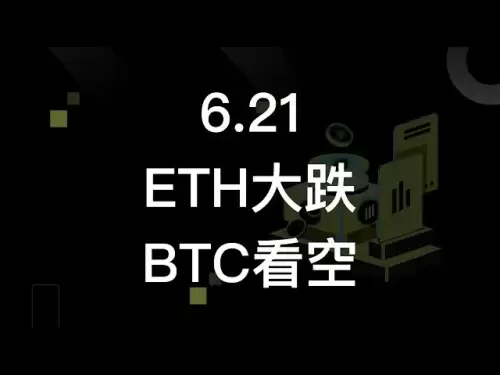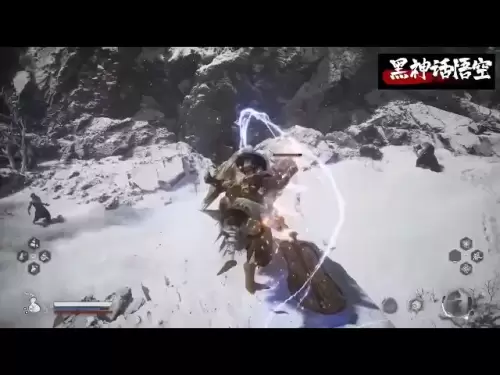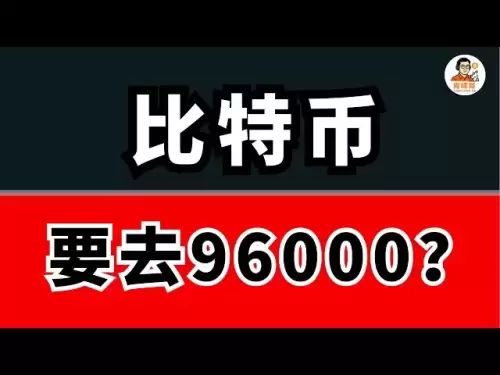-
 Bitcoin
Bitcoin $106,754.6083
1.33% -
 Ethereum
Ethereum $2,625.8249
3.80% -
 Tether USDt
Tether USDt $1.0001
-0.03% -
 XRP
XRP $2.1891
1.67% -
 BNB
BNB $654.5220
0.66% -
 Solana
Solana $156.9428
7.28% -
 USDC
USDC $0.9998
0.00% -
 Dogecoin
Dogecoin $0.1780
1.14% -
 TRON
TRON $0.2706
-0.16% -
 Cardano
Cardano $0.6470
2.77% -
 Hyperliquid
Hyperliquid $44.6467
10.24% -
 Sui
Sui $3.1128
3.86% -
 Bitcoin Cash
Bitcoin Cash $455.7646
3.00% -
 Chainlink
Chainlink $13.6858
4.08% -
 UNUS SED LEO
UNUS SED LEO $9.2682
0.21% -
 Avalanche
Avalanche $19.7433
3.79% -
 Stellar
Stellar $0.2616
1.64% -
 Toncoin
Toncoin $3.0222
2.19% -
 Shiba Inu
Shiba Inu $0.0...01220
1.49% -
 Hedera
Hedera $0.1580
2.75% -
 Litecoin
Litecoin $87.4964
2.29% -
 Polkadot
Polkadot $3.8958
3.05% -
 Ethena USDe
Ethena USDe $1.0000
-0.04% -
 Monero
Monero $317.2263
0.26% -
 Bitget Token
Bitget Token $4.5985
1.68% -
 Dai
Dai $0.9999
0.00% -
 Pepe
Pepe $0.0...01140
2.44% -
 Uniswap
Uniswap $7.6065
5.29% -
 Pi
Pi $0.6042
-2.00% -
 Aave
Aave $289.6343
6.02%
How to judge the strength of the MA engulfing pattern? How high is the probability of reversal?
The MA engulfing pattern, combining candlestick analysis with moving averages, helps crypto traders predict trend reversals, with effectiveness boosted by volume and other indicators.
May 28, 2025 at 10:07 pm
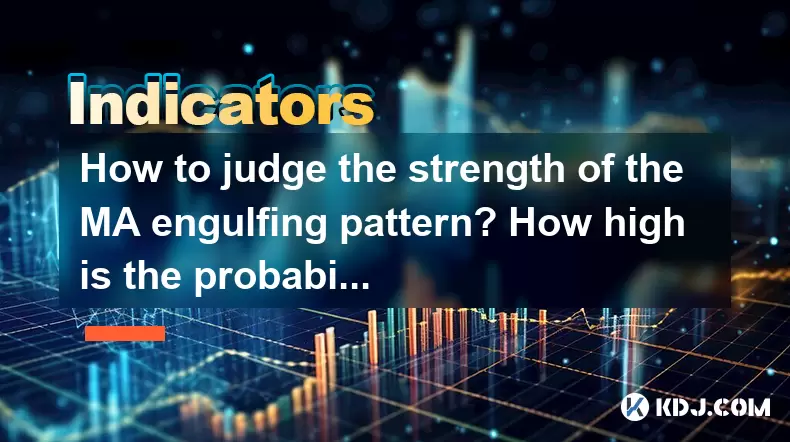
The Moving Average (MA) engulfing pattern is a popular technical analysis tool used by cryptocurrency traders to identify potential trend reversals. This pattern combines the traditional candlestick engulfing pattern with the moving average indicator to provide a more robust signal. To judge the strength of the MA engulfing pattern and determine the probability of a reversal, several factors must be considered.
Understanding the MA Engulfing Pattern
The MA engulfing pattern occurs when a candlestick fully engulfs the previous candlestick, and this engulfing action happens near a moving average line. The moving average used in this context is typically the 50-day or 200-day moving average, as these are widely followed by traders.
- A bullish MA engulfing pattern forms when a bullish (green) candlestick engulfs a preceding bearish (red) candlestick, and the engulfing occurs near or below a moving average.
- A bearish MA engulfing pattern forms when a bearish (red) candlestick engulfs a preceding bullish (green) candlestick, and the engulfing occurs near or above a moving average.
Factors Influencing the Strength of the MA Engulfing Pattern
Several factors can influence the strength of the MA engulfing pattern and the likelihood of a subsequent trend reversal.
Size of the Engulfing Candlestick
The size of the engulfing candlestick relative to the preceding candlestick is crucial. A larger engulfing candlestick suggests stronger market sentiment and a higher probability of a reversal. For instance, if a bullish candlestick engulfs a bearish candlestick by a significant margin, it indicates that buyers have taken strong control, increasing the chances of an upward reversal.
Proximity to the Moving Average
The closer the engulfing pattern occurs to the moving average, the more significant the signal. When the engulfing pattern forms right at the moving average line, it suggests that the price is being supported or resisted by the average, enhancing the potential for a reversal.
Volume Confirmation
Volume plays a critical role in confirming the strength of the MA engulfing pattern. Higher trading volume during the formation of the engulfing candlestick indicates stronger market participation and increases the reliability of the pattern. Traders often look for volume that is significantly higher than the average volume of the preceding periods.
Market Context
The overall market context and trend should be considered when evaluating the MA engulfing pattern. If the pattern forms during a period of consolidation or at the end of a prolonged trend, it is more likely to signal a reversal. Conversely, if the pattern occurs within a strong, established trend, it might be less reliable as a reversal signal.
Calculating the Probability of Reversal
While it is challenging to assign a precise probability to the MA engulfing pattern's ability to predict a reversal, certain guidelines can help estimate its effectiveness.
Historical Data Analysis
Analyzing historical data can provide insights into the success rate of the MA engulfing pattern in specific cryptocurrencies. Traders often backtest their strategies on historical price data to determine how often the pattern led to a reversal. For example, if the pattern resulted in a reversal 70% of the time in past instances, it might be considered a high-probability signal.
Combining with Other Indicators
To increase the probability of a successful reversal prediction, traders often combine the MA engulfing pattern with other technical indicators. Indicators such as the Relative Strength Index (RSI) or the Moving Average Convergence Divergence (MACD) can provide additional confirmation. If the RSI is in oversold territory during a bullish MA engulfing pattern, or if the MACD line crosses above the signal line, these factors can enhance the likelihood of a reversal.
Market Sentiment and News
Market sentiment and news events can also impact the probability of a reversal following an MA engulfing pattern. Positive or negative news related to the cryptocurrency can either reinforce or contradict the signal provided by the pattern. For instance, a bullish MA engulfing pattern accompanied by positive regulatory news might increase the chances of an upward reversal.
Practical Application of the MA Engulfing Pattern
To apply the MA engulfing pattern effectively in trading, follow these steps:
- Identify the Moving Average: Choose the appropriate moving average (e.g., 50-day or 200-day) based on your trading timeframe.
- Monitor Candlestick Formation: Watch for a candlestick that fully engulfs the previous candlestick.
- Check Proximity to MA: Ensure the engulfing pattern forms near the moving average line.
- Analyze Volume: Confirm the pattern with higher-than-average trading volume.
- Consider Market Context: Evaluate the current market trend and any relevant news or sentiment.
- Combine with Other Indicators: Use additional technical indicators for confirmation.
Case Study: Bitcoin MA Engulfing Pattern
To illustrate the application of the MA engulfing pattern, consider a hypothetical scenario involving Bitcoin (BTC).
- Scenario: Bitcoin has been in a downtrend for several weeks, with the price approaching the 50-day moving average.
- Pattern Formation: A bullish candlestick forms and engulfs the preceding bearish candlestick, with the engulfing happening right at the 50-day moving average.
- Volume Confirmation: The trading volume during the formation of the bullish candlestick is significantly higher than the average volume of the previous days.
- Market Context: The overall market sentiment is neutral, with no major negative news affecting Bitcoin.
- Additional Indicators: The RSI is at 30, indicating that Bitcoin is in oversold territory.
In this case, the MA engulfing pattern, supported by high volume and the RSI, suggests a high probability of a trend reversal. Traders might consider entering a long position, expecting Bitcoin's price to rise.
Frequently Asked Questions
Q1: Can the MA engulfing pattern be used on any timeframe?
Yes, the MA engulfing pattern can be applied to various timeframes, from short-term intraday charts to longer-term weekly or monthly charts. However, the effectiveness of the pattern may vary depending on the timeframe and the specific cryptocurrency being traded.
Q2: Is the MA engulfing pattern more reliable on certain cryptocurrencies?
The reliability of the MA engulfing pattern can differ across cryptocurrencies. Generally, it tends to be more effective on cryptocurrencies with higher liquidity and trading volume, such as Bitcoin and Ethereum, as these assets have more reliable price data and stronger market participation.
Q3: How can I improve the accuracy of the MA engulfing pattern?
To improve the accuracy of the MA engulfing pattern, consider using it in conjunction with other technical indicators, such as the RSI, MACD, or Bollinger Bands. Additionally, always take into account the overall market context and any relevant news or events that might impact the cryptocurrency's price.
Q4: Should I use the 50-day or 200-day moving average for the MA engulfing pattern?
Both the 50-day and 200-day moving averages can be used for the MA engulfing pattern, depending on your trading strategy and timeframe. The 50-day moving average is more responsive to recent price changes and is often used by short-term traders, while the 200-day moving average provides a longer-term perspective and is favored by longer-term investors.
Disclaimer:info@kdj.com
The information provided is not trading advice. kdj.com does not assume any responsibility for any investments made based on the information provided in this article. Cryptocurrencies are highly volatile and it is highly recommended that you invest with caution after thorough research!
If you believe that the content used on this website infringes your copyright, please contact us immediately (info@kdj.com) and we will delete it promptly.
- Pi Coin Price Bulls: Navigating the Crossroads After Mainnet Launch
- 2025-06-21 18:45:12
- ZachXBT, Bitcoin Bridges, and Garden Finance: A Deep Dive
- 2025-06-21 18:25:11
- BTC Recovery, Bearish Sentiment, and Trader Impatience: Navigating the Crypto Maze
- 2025-06-21 18:25:11
- SUI Price Wobbles Amid Crypto Slump: Opportunity or Omen?
- 2025-06-21 18:45:12
- Worldcoin Price Prediction: Will WLD Stage a Comeback?
- 2025-06-21 19:05:11
- Cardano's Crossroads: Market Sentiment, Slides, and a Glimmer of Hope
- 2025-06-21 19:05:11
Related knowledge

Does the sudden contraction of ATR indicate the end of the trend?
Jun 20,2025 at 11:14pm
Understanding ATR and Its Role in Technical AnalysisThe Average True Range (ATR) is a technical indicator used to measure market volatility. Developed by J. Welles Wilder, ATR calculates the average range of price movement over a specified period, typically 14 periods. It does not indicate direction—only volatility. Traders use ATR to gauge how much an ...

Is it invalid if the DMI crosses but the ADX does not expand?
Jun 21,2025 at 09:35am
Understanding the DMI and ADX RelationshipIn technical analysis, the Directional Movement Index (DMI) consists of two lines: +DI (Positive Directional Indicator) and -DI (Negative Directional Indicator). These indicators are used to determine the direction of a trend. When +DI crosses above -DI, it is often interpreted as a bullish signal, while the opp...

Is the trend continuation when the Williams indicator is oversold but there is no rebound?
Jun 20,2025 at 11:42pm
Understanding the Williams %R IndicatorThe Williams %R indicator, also known as the Williams Percent Range, is a momentum oscillator used in technical analysis to identify overbought and oversold levels in price movements. It typically ranges from 0 to -100, where values above -20 are considered overbought and values below -80 are considered oversold. T...
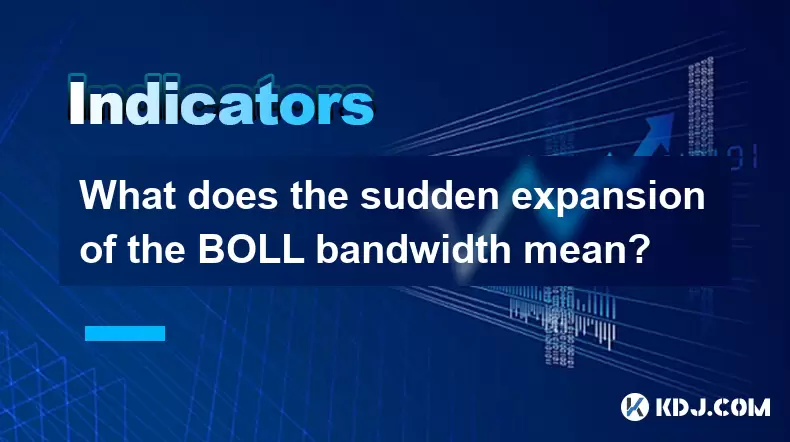
What does the sudden expansion of the BOLL bandwidth mean?
Jun 21,2025 at 01:49pm
Understanding the BOLL IndicatorThe BOLL (Bollinger Bands) indicator is a widely used technical analysis tool in cryptocurrency trading. It consists of three lines: a simple moving average (SMA) in the center, with upper and lower bands calculated based on standard deviations from that SMA. These bands dynamically adjust to price volatility. When trader...

Is the golden cross of the ROC indicator below the zero axis effective?
Jun 20,2025 at 09:42pm
Understanding the ROC Indicator and Its Role in Cryptocurrency TradingThe Rate of Change (ROC) indicator is a momentum oscillator widely used by traders to assess the speed at which cryptocurrency prices are changing. It measures the percentage difference between the current price and the price from a certain number of periods ago. The ROC helps identif...
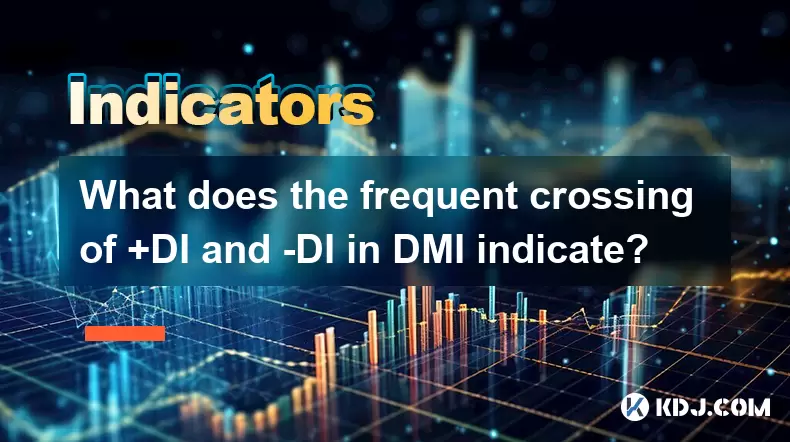
What does the frequent crossing of +DI and -DI in DMI indicate?
Jun 21,2025 at 05:14pm
Understanding the DMI and Its ComponentsThe Directional Movement Index (DMI) is a technical analysis tool used to identify the strength and direction of a trend. It consists of two lines: +DI (Positive Directional Indicator) and -DI (Negative Directional Indicator), along with the ADX (Average Directional Index) line which measures trend strength. In cr...

Does the sudden contraction of ATR indicate the end of the trend?
Jun 20,2025 at 11:14pm
Understanding ATR and Its Role in Technical AnalysisThe Average True Range (ATR) is a technical indicator used to measure market volatility. Developed by J. Welles Wilder, ATR calculates the average range of price movement over a specified period, typically 14 periods. It does not indicate direction—only volatility. Traders use ATR to gauge how much an ...

Is it invalid if the DMI crosses but the ADX does not expand?
Jun 21,2025 at 09:35am
Understanding the DMI and ADX RelationshipIn technical analysis, the Directional Movement Index (DMI) consists of two lines: +DI (Positive Directional Indicator) and -DI (Negative Directional Indicator). These indicators are used to determine the direction of a trend. When +DI crosses above -DI, it is often interpreted as a bullish signal, while the opp...

Is the trend continuation when the Williams indicator is oversold but there is no rebound?
Jun 20,2025 at 11:42pm
Understanding the Williams %R IndicatorThe Williams %R indicator, also known as the Williams Percent Range, is a momentum oscillator used in technical analysis to identify overbought and oversold levels in price movements. It typically ranges from 0 to -100, where values above -20 are considered overbought and values below -80 are considered oversold. T...

What does the sudden expansion of the BOLL bandwidth mean?
Jun 21,2025 at 01:49pm
Understanding the BOLL IndicatorThe BOLL (Bollinger Bands) indicator is a widely used technical analysis tool in cryptocurrency trading. It consists of three lines: a simple moving average (SMA) in the center, with upper and lower bands calculated based on standard deviations from that SMA. These bands dynamically adjust to price volatility. When trader...

Is the golden cross of the ROC indicator below the zero axis effective?
Jun 20,2025 at 09:42pm
Understanding the ROC Indicator and Its Role in Cryptocurrency TradingThe Rate of Change (ROC) indicator is a momentum oscillator widely used by traders to assess the speed at which cryptocurrency prices are changing. It measures the percentage difference between the current price and the price from a certain number of periods ago. The ROC helps identif...

What does the frequent crossing of +DI and -DI in DMI indicate?
Jun 21,2025 at 05:14pm
Understanding the DMI and Its ComponentsThe Directional Movement Index (DMI) is a technical analysis tool used to identify the strength and direction of a trend. It consists of two lines: +DI (Positive Directional Indicator) and -DI (Negative Directional Indicator), along with the ADX (Average Directional Index) line which measures trend strength. In cr...
See all articles























